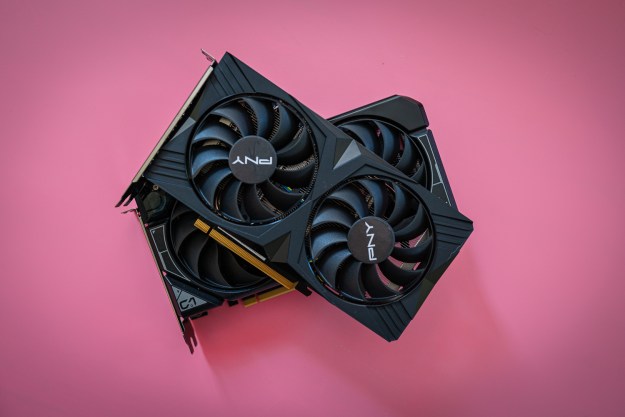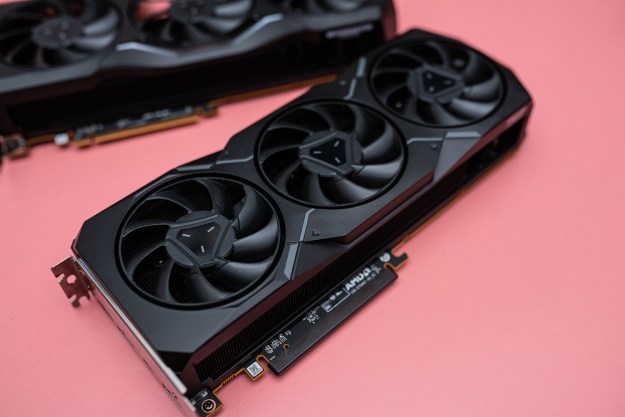AMD’s RX 7600 can’t hope to compete against the best graphics cards available today, but it can certainly trade blows with some lower-end models. For Nvidia, that means the RTX 4060 Ti. But are the cards really evenly matched?
We’ve put both of these GPUs through an extensive round of benchmarks, and we now know the answer. Here’s how the AMD Radeon RX 7600 compares to the Nvidia GeForce RTX 4060 Ti.
Pricing and availability
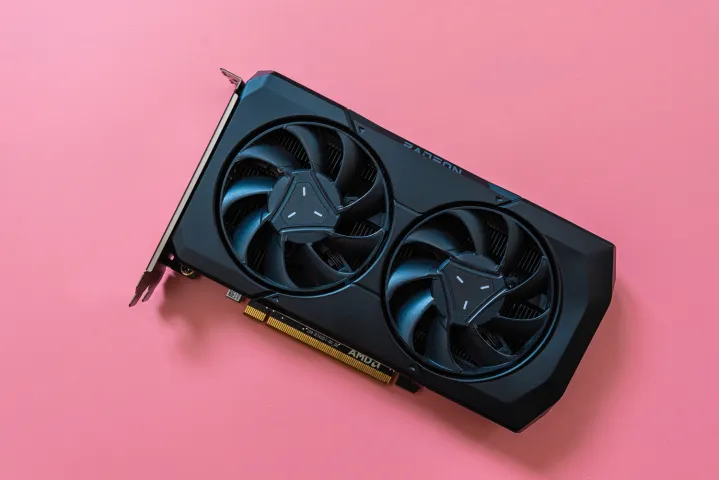
While there’s a pretty vast difference in price between the RX 7600 and the RTX 4060 Ti, the cards both launched within one day of each other. Both arrived at a time when their launch was very much needed due to the fact that only mid-to-high-end cards have been released in this generation so far.
AMD’s RX 7600 is the third card in the RDNA 3 lineup, launching after a long period of silence from Team Red. It hit the shelves on May 25. Rumor has it that the AMD GPU was initially meant to be priced at $300, but AMD may have had a case of cold feet and changed the pricing last minute. The official list price (MSRP) for the RX 7600 has therefore been set to $270.
Nvidia’s RTX 4060 Ti was launched one day earlier, on May 24, and priced at $400. However, the story with the RTX 4060 Ti is not quite as straightforward as the AMD counterpart. Three separate versions of the RTX 4060 are on the way: the RTX 4060 Ti 8GB, RTX 4060 Ti 16GB, and lastly, the base RTX 4060.
Only the 8GB Ti model launched in May, with the other two to follow later. Moreover, only the 8GB RTX 4060 Ti will come in Nvidia’s own Founders Edition flavor — the other two will be prepared strictly by Nvidia’s board partners.
Specs
| RTX 4060 Ti | RX 7600 | |
| Architecture | Ada Lovelace | RDNA 3 |
| Boost clock speed | 2.54GHz | 2.25GHz |
| VRAM | 8 GDDR6 | 8GB GDDR6 |
| Bus width | 128-bit | 128-bit |
| TBP/TGP | 160W/165W | 165W |
| Price | $400 | $270 |
Comparing the specifications of AMD and Nvidia graphics cards is always tricky. It’s honestly a lot like comparing apples to bananas.
For example, it’s hard to compare Nvidia’s CUDA cores to AMD’s Compute Units (CUs) due to the vastly different architectures used in each card. However, we can note that the RTX 4060 Ti comes with 4,352 CUDA cores, while AMD’s RX 7600 sports 32 CUs (or 2,048 Stream Processors, also known as SMs). CUDAs and CUs don’t work the same way, though, so this doesn’t really translate to the RTX 4060 Ti having twice as much computational power as the RX 7600.
There are, however, some similarities. Both cards sport a mere 8GB of VRAM, which could end up becoming a problem later on in some of the more demanding games. Both also have the same narrow 128-bit memory bus and share the same 165W total board power (TBP) or total graphics power (TGP). On the other hand, Nvidia’s RTX 4060 Ti has a higher boost clock speed, reaching 2.54GHz versus AMD’s 2.25GHz.
Performance
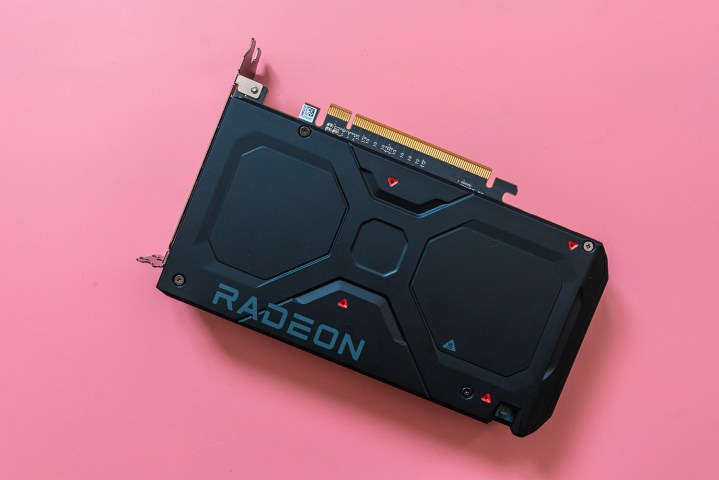
The specs of each GPU may not tell the whole story, but the benchmarks certainly do. We’ve had the opportunity to thoroughly test both the RX 7600 and the RTX 4060 Ti, so we already know which model wins the performance race. Let’s go through some of our test results, starting with synthetic benchmarks.

In a 3DMark Time Spy test, the RX 7600 lands just under the last-gen RTX 3060 Ti and a fair bit ahead of the RX 6600 XT. Surprisingly, it’s also defeated by Intel’s often-overlooked Arc A770 and Arc A750. The RTX 4060 Ti claims a strong lead here, with a 3DMark Time Spy score of 13,862 points compared to RX 7600’s 11,426.
Things look significantly worse when we look at the Port Royal score, which is a ray tracing test. AMD has never been the king of ray tracing, although its flagship RX 7900 XTX has made leaps and bounds in that regard compared to the previous generation. Still, the RX 7600 is a far cry from its older sibling. It loses to Nvidia in a big way, scoring 5,507 versus 8,132 points. On the other hand, the RX 7600 also beats its last-gen counterparts with ease.
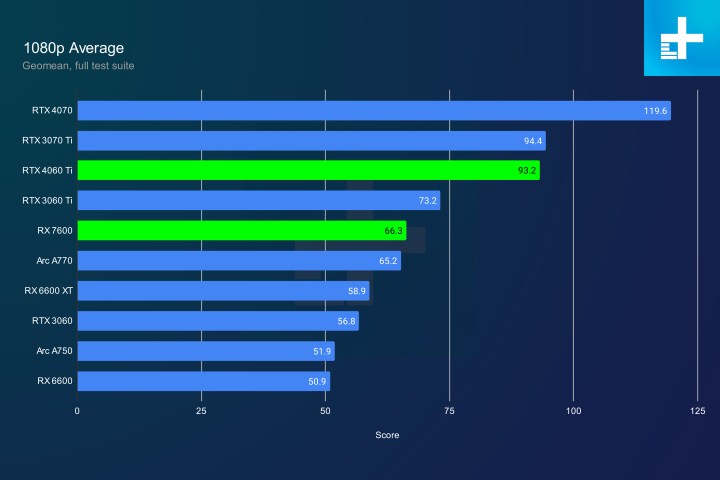
The AMD RX 7600 is very much a 1080p graphics card. At its $270 price point, it’s hard to expect anything else. Yes, it can handle some 1440p — especially if you’re generous with adjusting your graphics settings — but 1080p is where it gets to shine. Nvidia’s RTX 4060 Ti is a bit of a different story. Priced at $400, it’s bound to be picked up for 1440p gaming more often than the RX 7600, but of course, it does its best work in 1080p.
We’ve tested the GPU duo in several games, including titles such as Assassin’s Creed Valhalla, Cyberpunk 2077, Horizon Zero Dawn, and Red Dead Redemption 2. Across our entire test suite, at ultra settings, the RX 7600 averages 66.3 frames per second (fps). That’s a pretty massive gap if you compare it to the 93.2 achieved by the RTX 4060 Ti.
Still, at $130 cheaper, it’s hard to expect the RX 7600 to outperform the Nvidia offering, but 33 fps is a noticeable difference. At this resolution, the RTX 4060 Ti deals a heavy blow to the RX 7600, proving to be over 40% faster.
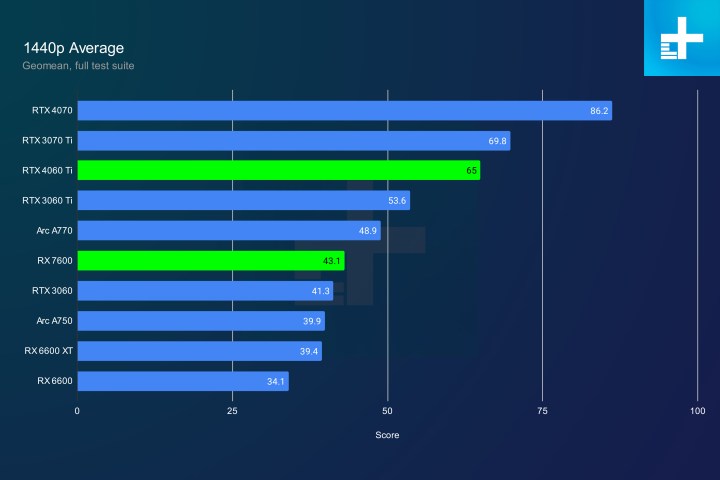
Moving on to 1440p gives us an unsurprising discovery. While Nvidia’s $400 GPU maintains playable frame rates at ultra settings, averaging 65 fps, AMD’s $270 card struggles to keep up with 43.1 fps, ending up around 50% slower than Nvidia. However, that doesn’t mean that the RX 7600 is useless for 1440p gaming — you just need to pick the right title.
As an example, in Forza Horizon 5, the RX 7600 hits a roomy 97 fps versus Nvidia’s 119.8 fps. On the other hand, Red Dead Redemption 2 sits at a mere 63.7 fps, and Cyberpunk 2077 averages 53.8 fps. While Nvidia’s lead is undeniable in all of our tests, the budget-friendly RX 7600 keeps up well enough that it can be used for 1440p gaming if you’re open to compromise.
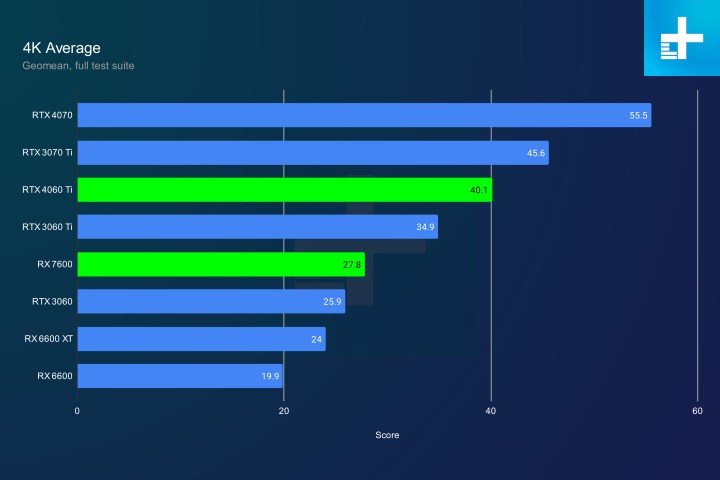
4K gaming is not the best idea if your PC build is equipped with a budget graphics card. As you can see in the above chart, it’s somewhat doable, but the experience isn’t going to be satisfying. Nvidia wins here, but neither card is doing great, and that’s fine — they were never intended to become go-to solutions for 4K gaming.
A similar trend can be seen when we look at the ray tracing performance of AMD’s RX 7600. Much like in the 1440p test, some titles remain playable if you enable ray tracing, but others are very much not. In general, this is in line with what we’ve usually seen from AMD — Nvidia rules the ray tracing scene.
At 1080p, Metro Exodus Enhanced Edition plays smoothly for both cards, with 67.1 fps for AMD and 91.1 fps for Nvidia. It’s still acceptable at 1440p, too. But more demanding games, such as Cyberpunk 2077, obliterate the RX 7600 while the RTX 4060 Ti is left somewhat intact. In a 1080p ray tracing benchmark ran at ultra settings, the RX 7600 only managed to hit 16.5 fps on average, but the RTX 4060 Ti averaged 42.3 fps.
Decent gaming on a budget
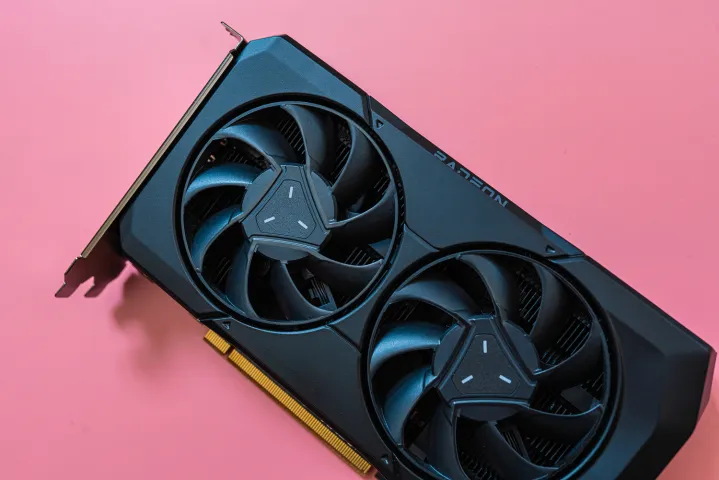
The RX 7600 is the little graphics card that could. It proves that AMD hasn’t given up and still aims to be competitive; if not in terms of performance, then at least in terms of price. However, that doesn’t make it the new go-to for everything under the sun, and making the choice between the RTX 4060 Ti and the RX 7600 is entirely up to your budget and how much you care about getting the best value for your money.
It’s not easy to compare the RX 7600 to the RTX 4060 Ti, because, despite its shortcomings, Nvidia’s GPU is a few steps above AMD’s — that much is clear from our benchmarks. If both cards were priced similarly, there’d be no question as to which one is better. When you throw in DLSS 3, that alone might clench the decision. However, the Nvidia card costs $130 more, and that puts it in a slightly different league.
Ultimately, in terms of raw performance, the $400 RTX 4060 Ti does a better job without a doubt. But at $400, you’d also be entitled to expect it to do better, or to come with more VRAM to offer better future-proofing. There’ll be a 16GB version soon enough, but that one will cost $500, which is almost twice the price of the RX 7600.
The AMD RX 7600 offers a decent, but not outstanding generational uplift while keeping the price somewhat reasonable. If it was priced even lower, it’d be a steal, but it’s still a good option given that it outperforms its last-gen counterparts while costing about the same. It’ll fit neatly into a 1080p gaming build and might become a popular option among budget-conscious gamers.
There are better GPUs you could be buying if you spent $100, $200, or $300 more, but if you’re keeping your GPU budget under $300, the RX 7600 is a solid option right now. If you’re more concerned about performance, the RTX 4060 Ti will work better for you, along with many other GPUs from previous (and current) generations.
Editors' Recommendations
- Nvidia RTX 50-series graphics cards: news, release date, price, and more
- You shouldn’t buy these Nvidia GPUs right now
- I tested the RTX 4070 against AMD’s new RX 7900 GRE — and it’s not pretty
- AMD just did Nvidia a serious favor
- This underrated AMD GPU beats the RTX 4070 Ti Super




